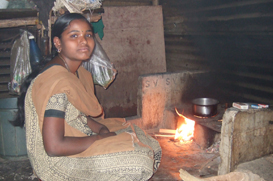Power to Segregate: Improving Electricity Access and Reducing Resource Demand in Rural India
This paper describes and analyzes lessons learned from the segregation of power for agricultural and non-agricultural use in the context of India's quest to reduce rural demand while improving access. One such lesson from the field seems to be that communication and training is essential, not least of utility staff involved in implementation.

India’s energy situation is marked by deficits, coal imports, a national grid that collapsed in 2012, and efforts to develop renewable sources. Acknowledging that 400 million people lack access to electricity, the government is obliged to endeavour to provide electricity to all parts of the country. Yet missing infrastructure leaves large rural areas and many poor households behind. The conditions are aggravated by the fact that, to irrigate their fields, millions of farmers opt for pumping groundwater. Dwindling water tables and cheaper but ever more powerful pumps together with high energy subsidies contribute significantly to unsustainably rising electricity consumption. This not only adds to the fiscal burden of the state but results in load shedding that disrupts well-being and production.
In order to reverse the negative trends, several Indian states have developed programmes for rural electricity segregation whereby separate feeders provide agricultural and non-agricultural consumers. According to evaluations of this scheme by the World Bank, the experiences are mixed. The State of Gujarat, which serves as the most interesting and widely disseminated example, previously had to deal with rampant power theft and farmers refusing to comply with regulations for rationing. Eventually, the Gujarat electricity utilities decided to enforce the rules through deployment of 500 ex-military men. Gujarat’s load management reforms have, all in all, attempted to reduce the demand for both electricity and groundwater among farmers, but they have resulted mainly in increased power supply to villagers and small rural industries.
How to Cite: Grönwall, J. (2014). Power to segregate: Improving electricity access and reducing demand in rural India. SIWI Paper 23.Stockholm: SIWI.



